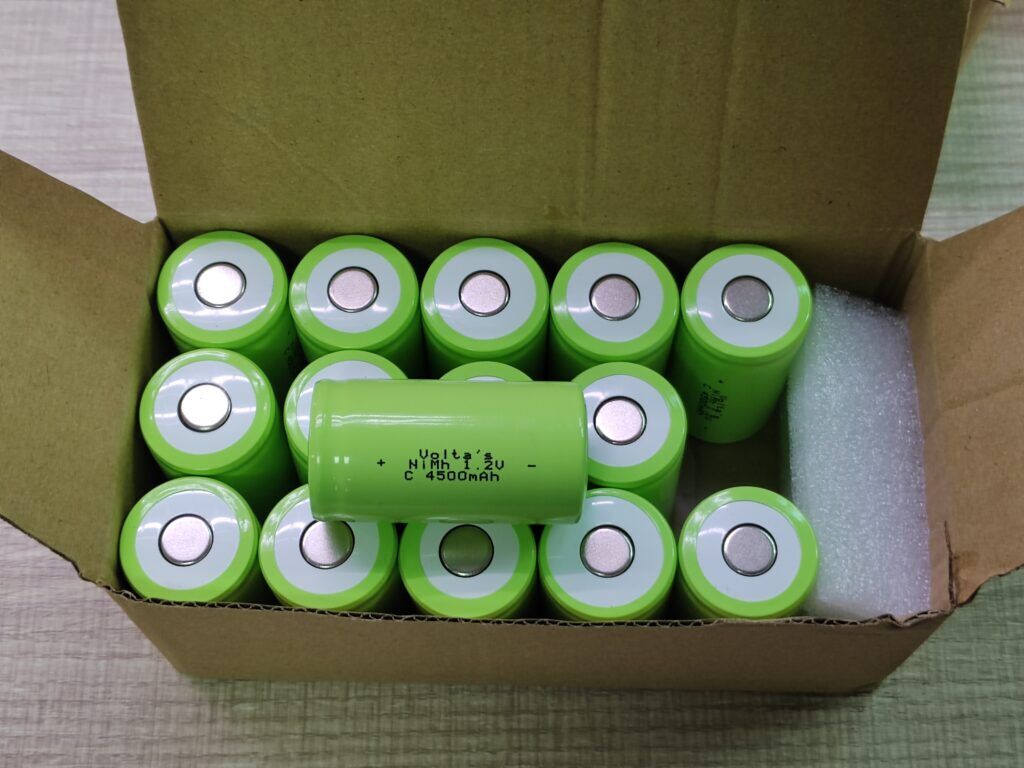Hotspots and focus of attention. Among the many renewable energy sources, rechargeable batteries, as a green energy source with high energy density, recycling and low carbon emissions, have gradually become the focus of attention. This paper will discuss in detail the importance and prospects of rechargeable batteries as a green energy source by reviewing the working principles, advantages and environmental impact of rechargeable batteries.
The development and utilization of renewable energy is an effective way to solve the global energy crisis, reduce environmental pollution and deal with climate change. In this context, rechargeable batteries have gradually emerged with their unique advantages and become an important part of promoting the development of green energy.
How a rechargeable battery works
A rechargeable battery is a device that converts electrical energy into chemical energy and vice versa when needed. Its basic working principle is to store electrical energy between the positive and negative electrodes of the battery through an electrochemical reaction. When electrical energy is needed, the stored chemical energy is converted into electrical energy output through a reverse electrochemical reaction.
Advantages of rechargeable batteries
(1) Recyclability: Rechargeable batteries can be used for multiple charge and discharge cycles, which are more environmentally friendly and economical than disposable batteries; (2
) High energy density: Compared with other Green energy equipment has a high energy storage density and can meet a wider range of energy needs;
(3) Low carbon emissions: rechargeable batteries do not need to burn fuel during use, and the carbon emissions generated are greatly reduced, reducing environmental pollution. (4) Flexibility
and portability: rechargeable batteries can be designed and manufactured according to different needs, easy to carry and used in various scenarios.
Environmental impact of rechargeable batteries
The impact of production, use and disposal of rechargeable batteries is the focus of comprehensive assessment and consideration. Among them, the collection, processing and manufacturing of materials in the battery production process will consume energy and generate a certain amount of waste, but with the advancement of technology and the development of greening, these problems will gradually be resolved. In addition, the recycling and reuse of batteries is also very important to effectively reduce the negative impact on the environment.
Prospects of rechargeable batteries
With the continuous innovation and progress of rechargeable battery technology, its application prospects in electric vehicles, energy storage systems, renewable energy equipment and other fields are broad. At the same time, a complete battery recycling and reuse system is gradually established, which can give full play to the recyclability of rechargeable batteries and promote the development of green energy.
2. Rechargeable battery performance and recycling
1 ) : Environmental performance of rechargeable batteries
In recent years, with the increasing awareness of environmental protection, the importance of green energy has attracted much attention. As a common energy storage device, rechargeable batteries have attracted extensive discussions in the field of environmental protection. To judge whether a rechargeable battery is a green energy source, you first need to understand its environmental performance.
2 ) : Recycling of rechargeable batteries
Compared with disposable batteries, rechargeable batteries undoubtedly have better recycling performance. Disposable batteries often become waste after use, causing non-negligible harm to the environment. The rechargeable battery can be used again by charging, which greatly reduces the waste of resources and reduces the negative impact on the environment.
3 ) : The energy source of the rechargeable battery
Considering the energy source of the rechargeable battery, we can see the close connection between it and green energy. Currently, more and more rechargeable batteries are charged by renewable energy sources, such as solar and wind power. This approach reduces the demand for traditional energy sources and reduces pollutant emissions, so it can be regarded as green energy.
4 ) : The emission reduction benefits of rechargeable batteries
Compared with other energy storage devices, rechargeable batteries have significant advantages in reducing carbon emissions. It can replace traditional fossil fuels, such as gasoline, diesel, etc., and fundamentally reduce harmful gas emissions in the atmosphere. This is of great significance for improving air quality and mitigating climate change and other environmental issues.
5 ) : Sustainability of rechargeable batteries
Considering the sustainable characteristics of green energy, rechargeable batteries can also meet this requirement. Through continuous technological innovation and improvement, the life of the rechargeable battery is extended and maintenance and maintenance costs are reduced. This sustainable feature makes the rechargeable battery more environmentally friendly and reliable during long-term use.
Conclusion: As a kind of energy storage device, rechargeable battery does exhibit the characteristics of green energy in many aspects. Its environmental performance, recycling, energy source, emission reduction benefits, and sustainability features make it an important part of today’s green energy. Rechargeable batteries play an indispensable role in promoting the construction of an environment-friendly society.

3. Recycling of rechargeable batteries Energy saving and emission
reduction, green rechargeable
batteries are an indispensable part of modern life. However, with the widespread use of batteries, the problem of disposal of used batteries has become increasingly prominent. In this era of energy conservation and emission reduction, and the pursuit of green environmental protection, how to recycle rechargeable batteries has become an urgent problem to be solved.
1.1). Necessity and Challenges of Recycling
The mass production of used batteries has brought enormous pressure to the environment and wasted precious resources. However, the complex structure and chemical composition of rechargeable batteries make recycling difficult, and technical, cost and safety challenges need to be overcome.
1.2). Innovative technologies and practical applications
In recent years, many innovative technologies have emerged, bringing new hope for the recycling of rechargeable batteries. For example, combining physical and chemical methods to crush and sort batteries with special equipment can improve recycling efficiency and reduce environmental pollution.
2.1) Physical method: mechanical crushing and sorting technology
Mechanical crushing and sorting technology is a commonly used physical method in the recycling of rechargeable batteries. By using crushing equipment and screening machinery for different types of batteries, batteries can be completely decomposed and sorted for further Recycling offers convenience.
2.2)Chemical methods: high-efficiency electrolysis and solvent extraction
High-efficiency electrolysis and solvent extraction are common methods for recovering toxic chemical components in rechargeable batteries. By using special electrolytes and solvents, toxic substances can be effectively separated and recycled, reducing their harm to the environment and human health.
3). Resource utilization and circular economy
Recycling rechargeable batteries can not only reduce the environmental pressure brought by waste batteries, but also realize the reuse of resources. After the recycled batteries are processed, they can be used for renewable energy equipment or to manufacture new battery products, so as to realize the recycling of resources and maximize economic benefits.
4). Incentive policies and public education
In order to promote the recycling of rechargeable batteries, the government should adopt incentive policies to encourage enterprises to invest in rechargeable battery recycling technology and establish a recycling network. At the same time, public education is also very important. By improving people’s environmental awareness and knowledge level, participation in rechargeable battery recycling can be increased.
Conclusion: By increasing public awareness, building recycling networks, innovative technology applications, and strengthening legal regulation, we can open a new chapter in rechargeable battery recycling and move the cause of environmental protection forward. Let us work together and act for a more coordinated, healthy and sustainable future!

